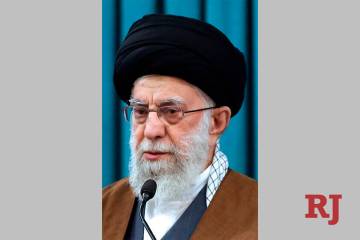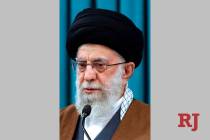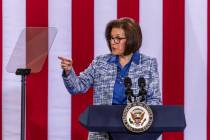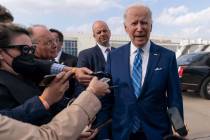COMMENTARY: Nevada lawmakers must prioritize class size
Most of us have had at least one teacher who’s made a lasting impact on us. I fondly remember my fourth-grade teacher, Mr. Dewey. His lessons were creative and animated. He took us on a nine-day field trip across the state, which brought to life months of learning Nevada’s history.
Mostly though, I remember him noticing the little things: that I was struggling with long division, that I did not have money to buy the class picture, that I was a good speller. In that class I felt valued. Because I was seen, Mr. Dewey challenged me at my level. Because of that, I blossomed. Sometimes I wonder how I would have fared as a student in today’s overcrowded classes.
In deciding to pursue a career in education, I thought of teachers such as Mr. Dewey and the lifelong impact they have on society. I am now in my 19th year of teaching. I have not wavered in my dedication to that same cause: to make a measurable impact on a child’s life.
But that goal has become increasingly difficult. In Clark County, where I have spent my career, classrooms have become larger over the years. Teachers have persisted in rising to the challenge of giving each child as individualized an education as possible, but the community has taken for granted the amount of work that takes.
Findings from a 2017 survey of 9,000 Nevada educators conducted by the Nevada Department of Education make it clear that we are at a tipping point. Of those surveyed, 77 percent indicated that class size has a significant impact on student learning. As a young student I knew this to be true, but now as an educator it is glaringly apparent. Either positively or negatively, most of us have experienced that reality.
In small classes, teachers can more regularly engage one-on-one with each student. They can assess their progress and tailor instruction more precisely, resulting in improved student outcomes. But in large classes, it is much easier for students to blend in with each other, becoming one whole group being taught, not individuals with a variety of strengths and weaknesses. They become more like pieces in a production line, with teachers teaching to the middle because that is where they can reach the most students.
The same survey showed that more than 50 percent of teachers reported having classes of more than 25 students. While that may not sound troubling, in my experience, middle and high school classes are commonly filled with more than 35 students. In a report commissioned by state education officials, the recommended ratio of students to a teacher is 15-to-1 in kindergarten through third grade and 25-to-1 for all other grades. Nationally, Nevada is ranked at the bottom when it comes to education, and given these numbers it is no surprise. We simply must do better for Nevada’s children.
The time is now for the Legislature to act. Our legislators must take up the task of prioritizing class size as they work to address the education funding problem. Keeping class size at the forefront of the debate is critical in making real changes that will have the greatest impact on student achievement.
As I look back on my formative years, I am thankful for the individual attention I received from caring and dedicated teachers. It is because of their ability to teach to each child in their class that I, along with my classmates, was able to thrive in public education. I want the same for every one of my students and for every child in our state.
Jordana McCudden is a consulting teacher for the Clark County School District through Peer Assistance and Review. She is a Teach Plus Nevada Teaching Policy fellow.




























